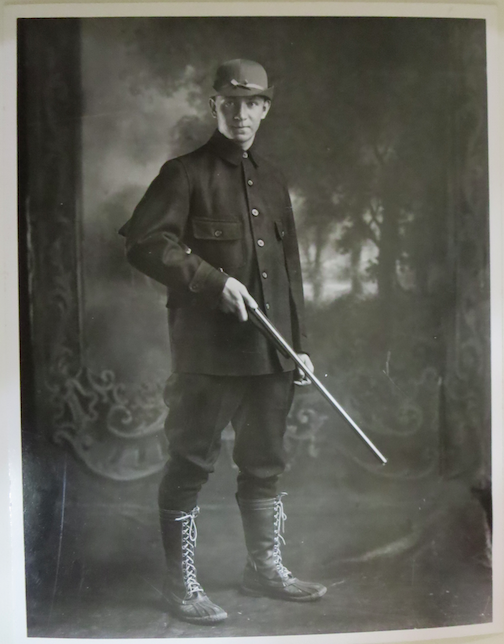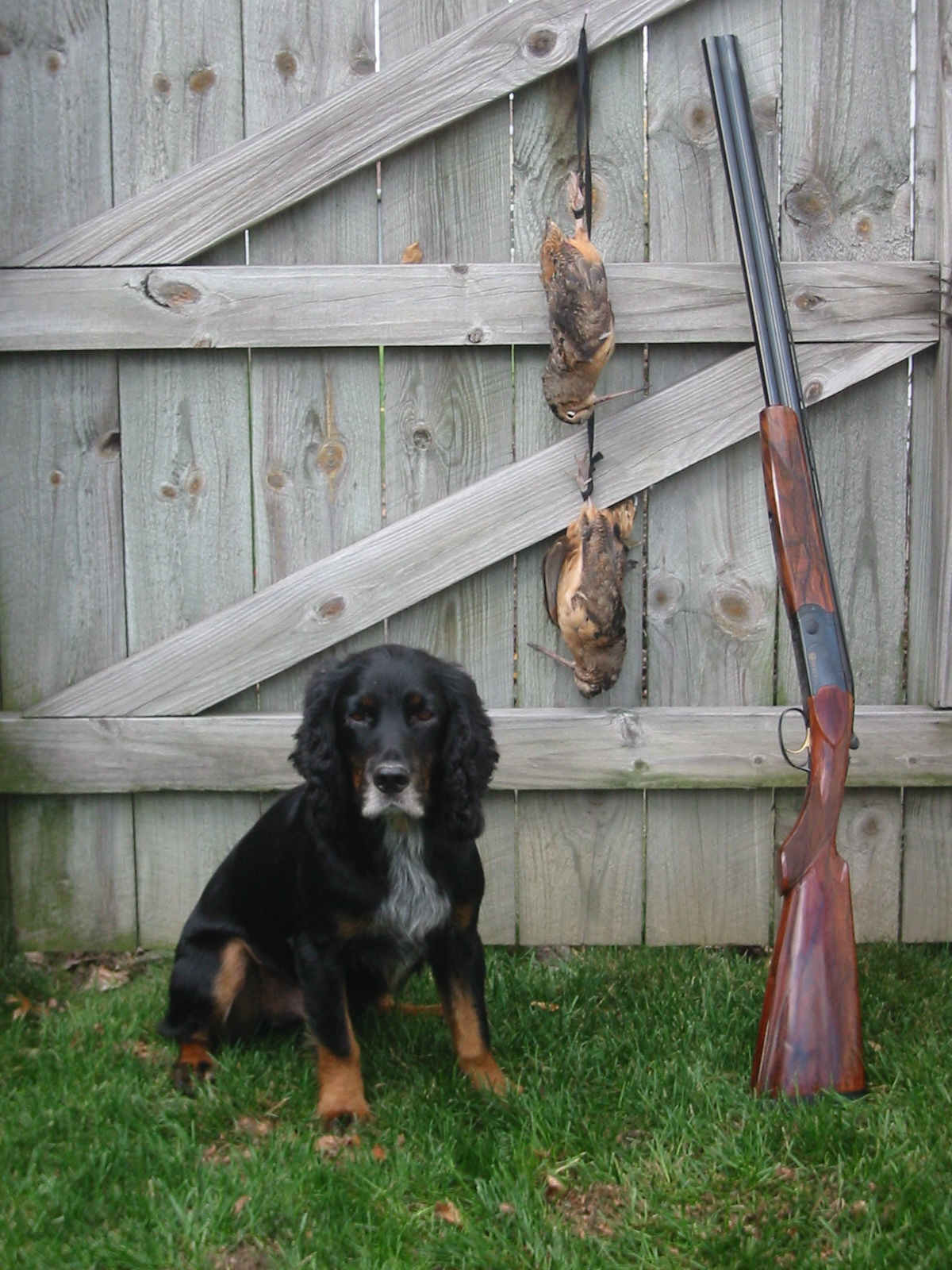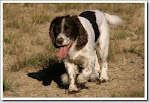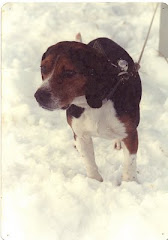(This post first appeared on February 26, 2010 under the title "A Ballad Of Ballard Plaid." After my visit to the Franklin County Historical and Museum Society in September, 2014, I was able greatly to expand the article under its current title. Many thanks to Ms. Jean Goddard, Ms. Diane Bonenfant, and others who assembled Ballard items from the Society's collection and organized them for my inspection.)
My father in law Paul D., DVM gave me a pair of experienced “Malone pants” shortly after I married his lovely daughter Nancy in 1978. He told epic stories of the heroic cloth from which they were made, warm when wet and nearly bullet proof. The fabric was so thick and sturdy that when I brought the pants back to Buffalo for tailoring, it was difficult to find anyone who felt comfortable working with it.“Malone pants” came from the Ballard Mill, located on the Salmon River in Malone, NY. Of particular interest to my father in law was Ballard’s local flock of sheep. He claimed that the long Malone winters made the wool extra special. I don’t recall Doc telling me whether he'd ever provided vet services to the Ballard flock. The last of those sheep were long gone by the time I arrived on the scene. What I've learned since about the Ballard mill follows.
The Man
Jay Olin Ballard was born in Mexico, NY on January 8, 1858. He settled in Malone, NY in 1887. In 1891, he opened his eponymous mill in partnership with his brother-in-law Col. William Skinner. After transferring operation of the mill to his nephew Robert Skinner, Mr. Ballard passed away in the first half of the 1930s.
While Mr. Ballard insisted on making a quality product, he was also solicitous about his workers’ well-being. For example, he put on an annual 4th of July Field Day for his employees and their families on his mill’s grounds. The area in front of the mill was decorated with colored lights, and games were played in the afternoon, while a band played music for dancing in the evening. For those not interested in the games, there were fishing events held on the Salmon River. In this letter from the Franklin County Historical & Museum Society's collection, Mr. Ballard thanks an employee who’d shown that this concern was mutual:
The Plant
After his first woolen mill was unsuccessful, Mr. Ballard built another mill a bit upstream on the Salmon River on the site of a former sawmill. The building survives today as part of the Malone campus of North Country Community College.
Before the mill acquired a small generator, the mill produced electricity by damming the Salmon River.
Products
After Jay Ballard died, stock holder John Cantwell was able to purchase a controlling interest in the company. The Great Depression that hurt small businesses all across the country did not spare the Ballard mill. But with a loan from the Reconstruction Finance Corporation, the mill was able to reopen in 1936.
Hunters’ and heavy workmen’s clothes were Ballard’s biggest sellers.
 |
| Ballard also offered traditional plaids |
For more images of Ballard clothing and 1920s advertisements, click on Vintage Haberdashers.
In addition to direct selling to the public, Ballard also customized orders for agencies and firms desiring high-quality woolen garments. When Lake Placid hosted the Winter Olympics in 1932, the American ski teams’ uniforms were made at the Ballard mill. In WWII, Ballard made a khaki material for the Army. A Government Inspector was sent to Malone to watch the entire operation of fabric making. Rolls of the khaki cloth had to be wrapped in a special paper for shipping.
The Conservation Department also bought its uniforms from Ballard. Grey in color, the uniforms were made in two weights of material.
Even L.L. Bean purchased several Ballard items for his mail order business, first making sure that his Bean label and buttons were sewn into them.
At the mill’s height, Ballard clothes were sold in 28 states and Alaska.
The Sheep
Ballard initially bought wool from Australia and New Zealand, and graded and washed it at the mill. Before long, however, the question arose whether the mill could use wool from locally raised sheep. Experimentation began on this project, and soon local farmers and the Ballard mill itself were raising sheep. At various times, Ballard’s sheep were kept on a farm located on the Limekiln Road in Malone.
None of my homework so far has provided any further information on the Ballard flock which so interested my father in law. Malone residents who wrote about the mill may have considered the sheep’s breed as unremarkable “common knowledge” and accordingly saw no need to record it or related information.
Sheep, however, had been extensively raised for wool in Vermont by the mid 1800s. Adirondack history is amply supplied with the names of Vermonters like Apollos "Paul" Smith who migrated westward to New York and did well. It would not be a reach to hypothesize that sheep that were doing well in Vermont might have arrived and thrived with their emigrant owners. The Fairbanks Museum & Planetarium in St. Johnsbury, Vermont wrote in 2003 that the development of Merino sheep breeding kept sheep farming important in the 1860s and 1870s. The Merino obtained a higher degree of perfection in northern New England than in any other section of the United States. The combination of breeding skill and climate brought out heavier wool characteristics that gave the breed an excellent reputation for superior wool. Merino sheep are also noted for their hardiness and herding instincts. Having a cleft lip allows these sheep to graze on just about everything. Poor, rocky soil like that found in northern New York therefore would have made fine grazing land for Merinos.
As this point, The Smart People would intone "clearly more research is needed." I prefer to fracture Johnny Cash's song and promise that I'll keep my eyes wide open all the time for any more information about the Ballard flock.
Sheep, however, had been extensively raised for wool in Vermont by the mid 1800s. Adirondack history is amply supplied with the names of Vermonters like Apollos "Paul" Smith who migrated westward to New York and did well. It would not be a reach to hypothesize that sheep that were doing well in Vermont might have arrived and thrived with their emigrant owners. The Fairbanks Museum & Planetarium in St. Johnsbury, Vermont wrote in 2003 that the development of Merino sheep breeding kept sheep farming important in the 1860s and 1870s. The Merino obtained a higher degree of perfection in northern New England than in any other section of the United States. The combination of breeding skill and climate brought out heavier wool characteristics that gave the breed an excellent reputation for superior wool. Merino sheep are also noted for their hardiness and herding instincts. Having a cleft lip allows these sheep to graze on just about everything. Poor, rocky soil like that found in northern New York therefore would have made fine grazing land for Merinos.
As this point, The Smart People would intone "clearly more research is needed." I prefer to fracture Johnny Cash's song and promise that I'll keep my eyes wide open all the time for any more information about the Ballard flock.
Denouement
The demand for heavy woolen items declined after WWII. Inexpensive woolen imports from recently rebuilt modern mills in Japan and Italy took some of Ballard’s business. Newly introduced light synthetic fabrics and a decline in numbers of American small farmers, lumberjacks, and assorted roughnecks contributed to a collapse in demand and the inevitable closing of the mill.
Johnson Woolen Mills bought Ballard’s copyrighted plaid after the Malone mill closed in the 1960s. “Malone plaid” or “Ballard plaid” is still available from the Vermont mill, although Ballard’s 100% wool fabric has been replaced with an 85% wool - 15% nylon blend. The Johnson website calls the pattern “Adirondack plaid.” L. L. Bean also offers this plaid in their "Maine Guide" Pants and "Maine Guide Zip-Front Jac-Shirt." While it's great that this plaid lives on in its blended version for contemporary consumers who may not be quite sure what "Malone cloth" is all about, the Cold Duck just blushes, and you and I exchange a knowing wink.














